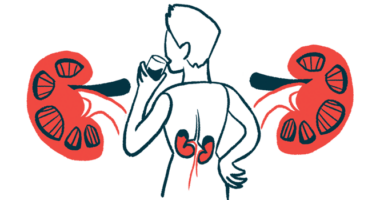Investigational Therapy AZP-3601 Granted Orphan Status in Europe

The European Commission has granted orphan drug designation to AZP-3601, Amolyt Pharma’s investigational therapy to treat hypoparathyroidism.
Orphan designation is given to promising treatment candidates for life-threatening and debilitating rare diseases, those affecting not more than five in every 10,000 people in the European Union.
The designation will be accompanied by financial incentives and regulatory support to help speed the therapy’s development toward regulatory approval. Should AZP-3601 be approved, it will be allowed 10 years of market exclusivity across Europe.
The decision, based on the favorable opinion of the Committee for Orphan Medicinal Products (COMP) in Europe, follows a similar designation by the U.S. Food and Drug Administration last year.
“We are very pleased to have been granted Orphan Drug Designation in both the U.S. and now the E.U., something we believe reflects the need for new therapies to treat hypoparathyroidism,” Thierry Abribat, PhD, founder and CEO of Amolyt Pharma, said in a press release.
Hypoparathyroidism is characterized by low levels of parathyroid hormone (PTH), resulting in depleted calcium and elevated phosphorus in the blood, in addition to vitamin D deficiency.
The condition is usually treated with calcium and vitamin D supplements. However, many patients still have difficulties stabilizing their blood calcium levels, and excrete excessive calcium in their urine, which increases the risk of chronic kidney infections.
AZP-3601 is a PTH analog, a compound intended to mimic the activity of naturally-occurring PTH. Originally developed at Massachusetts General Hospital and Harvard Medical School, it was designed to activate a specific configuration of the PTH receptor, helping to sustain normal blood and urine calcium levels.
Data from single- and multiple-ascending dose studies in a Phase 1 trial of AZP-3601 in healthy volunteers indicated that it safely and effectively increased blood calcium levels for at least 24 hours when administered subcutaneously (under the skin) each morning for 14 days, the duration of the treatment period.
Decreased blood phosphorus and a reduction in PTH were also observed, consistent with the higher calcium levels. AZP-3601 did not increase calcium excretion in the urine, suggesting proper calcium absorption, which could lower the risk of kidney disease.
“This highlights the potential significant benefits that AZP-3601 may bring to patients versus currently approved therapies, including sustained serum [blood] calcium normalization for a full 24 hours, and reduced risk of hypercalciuria [excess calcium excretion], a key contributing factor to chronic kidney disease,” Abribat said.
Excessive PTH exposure can have a negative effect on bone health. Since AZP-3601 is quickly eliminated from the body, it’s thought that the treatment preserves bone health. No markers of bone health were altered with treatment in the Phase 1 trial.
“We believe AZP-3601’s unique mechanism of action may preserve bone integrity as demonstrated by the bone biomarker data from our Phase 1 clinical trial in healthy volunteers,” Abribat added. “Together, these clinical benefits are relevant for many patients with hypoparathyroidism, especially the 26% who have established chronic kidney disease and those at risk of developing kidney disease plus the 17% with osteopenia or osteoporosis [loss of bone health].”
Amolyt launched a three-month multiple-ascending dose study of AZP-3601 in hypoparathyroidism patients in Europe late last year.
“We are advancing AZP-3601 through an efficient clinical development plan and we look forward to announcing proof-of-concept data in patients with hypoparathyroidism mid-year,” Abribat concluded.







